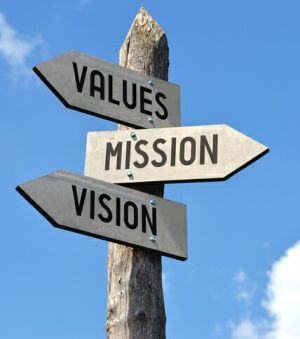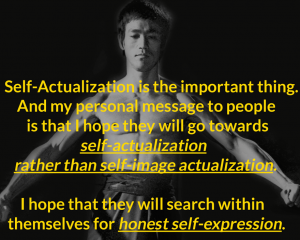 If you have lived a lifestyle that left you with no foundation for self-growth is answering the question… what comes first: the chicken or the egg.
If you have lived a lifestyle that left you with no foundation for self-growth is answering the question… what comes first: the chicken or the egg.
You, people in this predicament have one characteristic in common: you don’t want to do anything that you cannot see the immediate usefulness of it.
Usefulness can also be enjoyment… enjoyment is useful. ((Enjoyment is an extrinsic value))
This common characteristic has rendered you to either rely on your quick intelligence in school, and you had reasonable to good grades, or you had bad grades… the result in common: no knowledge of the world, no foundation for self-growth, because no real learning took place.
The percentage of humanity that would like to grow, but has nothing going for them, other than that vague desire, is a staggering 70%. 70%!
 When some of you, who accidentally came to my site and found out that you have to study what you missed in high school… you don’t know what to do with that.
When some of you, who accidentally came to my site and found out that you have to study what you missed in high school… you don’t know what to do with that.
And even if you do, some rare people actually do, start watching video courses on biology, or history, or whatever, your brain needs more intense pressure to be willing to use its capacity for brain plasticity, and start receiving and retaining the new knowledge.
And unless you are willing to give up the need for immediate usefulness of the activity, you will do the new studying exactly the way they did it in high school… relying on your brilliance, or not building any long term memory knowledge.
Many of you also fancy yourself smart, and the thought that comes with being smart is that the new information will stick… but it doesn’t.
It doesn’t stick if you are brilliant, and it doesn’t stick if you are less than brilliant.
The brain is a lot like wood… you need to carve into it. And it is painful to get new knowledge.
If and as long as your TLB is only 1, you won’t go for anything painful, and you are kidding yourself.
Learning, no matter how much you already know, no matter how smart you are, is allowing a carving knife to touch your brain… it hurts.
And that is why humanity is so divided to the haves and the have nots… if you can’t take the pain… you’ll have nothing… or not much.
So your number one job is to decide that pain is your friend and that many things you are asked to do has usefulness, if it is painful: pain is the indicator that it is useful.
Doesn’t sound very appetizing: in a world where people don’t cook, where you get everything put in front of you, ready, you don’t have any familiarity with working for what you want.
By the way: usefulness is a value. It is a systemic value, an on/off type of value, but it is a value nevertheless.
It is the base value that you live by… so, in essence, you live by systemic values…
You judge the world from there, the level of right/wrong, useful/useless, worth it/isn’t worth it, and even art, a diamond, a lover are judged by you according to the on/off nature of systemic values.
You have a hard time seeing value anywhere, in any activity, in any person, including in yourself…
Let’s connect the dots between Maslow’s hierarchy of needs, and your value system: systemic, extrinsic and intrinsic values…
Self-growth is the highest level of the hierarchy of needs, and you are stuck on the “deficiency needs” level…
Here are the human needs according to Maslow’s Hierarchy of needs…
- 1. Physiological needs – these are biological requirements for human survival, e.g. air, food, drink, shelter, clothing, warmth, sex, sleep.If these needs are not satisfied the human body cannot function optimally. Maslow considered physiological needs the most important as all the other needs become secondary until these needs are met.
- 2. Safety needs – protection from elements, security, order, law, stability, freedom from fear.
- 3. Love and belongingness needs – after physiological and safety needs have been fulfilled, the third level of human needs is social and involves feelings of belongingness. The need for interpersonal relationships motivates behaviorExamples include friendship, intimacy, trust, and acceptance, receiving and giving affection and love. Affiliating, being part of a group (family, friends, work).
- 4. Esteem needs – which Maslow classified into two categories: (i) esteem for oneself (dignity, achievement, mastery, independence) and (ii) the desire for reputation or respect from others (e.g., status, prestige).Maslow indicated that the need for respect or reputation is most important for children and adolescents and precedes real self-esteem or dignity.
- 5. Self-actualization needs – realizing personal potential, self-fulfillment, seeking personal growth and peak experiences. A desire “to become everything one is capable of becoming”(Maslow, 1987, p. 64).
If you live by the requirement to do anything is that it needs to be immediately, and obviously useful, given that your main requirement of anything you consider of value is for it to be useful, you are stuck on the lowest levels. Even belonging needs are pretty much out of things to be useful need… real friendship, intimacy, trust, giving affection and love is guided by usefulness.
You can see, maybe, that the need for self-actualization is far off in the sky…
Without higher level values, extrinsic and intrinsic values, you remain the center of your world, and there will be no chance to develop a vision and missions that bring the vision to bear. ((
It’s all about seeing… and seeing is the result of looking…
Back in April (it’s December now) I assigned to four students to become value recognizers. To recognize value you have to see value. You cannot see value unless you are on the level on Maslow’s hierarcy of needs that matches that kind of, that level of value.
So what I assigned to them is to raise themselves, by their bootstraps, to a higher level.
One person managed to do that. Three didn’t.
The issue is this: when you are asked to see something that you can’t see, the first thing you need to internalize: there is something to see, that other people can see… Unless you make this mental leap, you’ll abandon the assignment as “there is nothing to see here”.
The exercise of staring on the ceiling as soon as you turn the light off at night, is to activate the “muscle” that allows you to look: if “she” said there is something to see, by god I’ll see it… If not today, then tomorrow. But I will stare until I see it.
There was one course, one seminar in Landmark Education, that was supposed to activate this “muscle” and it failed. It failed to activate the muscle… But it did activate that muscle for three people… I was one of them. Worldwide. Three people. And not surprisingly, all three of us were Jewish.
What does Jewishness have to do with it? A whole lot.
In Judaism you are taught that you live and see only the tenth emanation of the Creator’s creation, and the 99% is shrouded in mystery. So you don’t expect to see everything, and you don’t think that you do.
You endeavor, you strive for seeing more and more of the mystery… so you LOOK!
What is missing for most people is the effort to look. They don’t. It doesn’t seem immediately useful… so they get stuck on the lowest levels of the hierarchy of needs, on the lowest level of values.))
Now, with that said: every company, every leader and their brother claim that they have a vision, and mission, and all that dance.
They are lying.
I am going to quote what I just wrote to my students on the Accountability Forum:
The context is, one of my students fell face first into the desire trap. In the desire trap you forget that what produces results is your doing, and you start to concentrate on having, the money, the glory, the success… And that traps you.
Pay attention: I am distinguishing a principle that if you learn it, your life will never be the same: your astuteness level will go through the roof. Astuteness is the accuracy with which you see the world… the current level of astuteness in the world is 1%. PhD’s astuteness is around 4%. Low. This is why most books’ truth value is under 10%… the lack of the big picture, the lack of the whole truth…
OK, here is the principle
Good work Kawa.
The more dots you have in a picture… like the picture of a desire trap, or the picture of what is a high about-me number, what is master plan and what is desire trap, what is having and what is doing/giving/providing, the more dots you have the faster you can resolve wrong steps like that, and the faster you can return to wholeness and high vibration.
The same principle applies to what you are practicing with all the spiritual practices you are doing.
It is all about seeing an ever more complete and accurate picture of reality, so your actions can be astute, precise, and effective.
Interestingly, I learned this principle from an artist/teacher of mine in university. As an architecture student we had a lot of freehand drawing classes, six hours a week.
He taught us students to go back and forth between looking through squinted eyes where you don’t see the details (the big picture) and open eyes: focusing on the details… alternating between the two states, rhythmically and regularly.
Those of us who did it got our drawing always at some level of completeness, with correct details and correct proportions. Works of art.
Those of us, the “normal” ones, behavior worked only on details, and the drawing was never correct and never complete. Too much in one area, none in others.
The same exact behavior you can notice on yourself or on your peers: they get lost in the detail and forget about the big picture.
Having, stuff, money, power, experiences, is a detail. A side effect. The vision, the kinds of doings you enjoy doing, the difference your doing makes is the big picture.
And you can project this technique to Michelangelo, the sculptor. To the Playground. To the Second Phase Activators Course. To my health coaching… To politics. To the theory of happiness… everywhere… because it is a principle.
A true principle is true everywhere…
Unfortunately, scanning my articles, or reading an article here and there, or dabbling in things will keep you on the surface, on the level of the visible, on the level of the mundane… and it will keep you in the neat, the plausible and the wrong.
One of my favorite sentences, by H.L. Mencken: “Explanations exist; they have existed for all time; there is always a well-known solution to every human problem — neat, plausible, and wrong.”
And the way to get to that neat, plausible, and wrong explanation of reality is to look through a narrow cone of vision, ignore the big picture, ignore anything that you may know that conflicts with your explanation… basically what we call science nowadays.
Here are a few more H.L. Mencken quotes: “School teachers, taking them by and large, are probably the most ignorant and stupid class of men in the whole group of mental workers.”
“The older I grow the more I distrust the familiar doctrine that age brings wisdom.”
Go, read more… but I warn you, you’ll find nothing soothing, nothing complimentary, nothing kind to your own ignorance. If you can connect the dots… few of you can, you’ll find his writing delightful, expressing what you have been thinking, just a lot better, clearer, and more viciously. I love it.
The truth could set you free… but not until you can bare its sting… not until you can get through the pain, and actually look… that is not a quote, that is me speaking.
In my search to find a way to turn ignorant adults into people who can be trained and who can raise themselves by building a foundation of knowledge, a plasticity of brain, I look at methods that scare me…
If they don’t scare me, they probably don’t work. No pain, no gain. This is also a principle… true in every single area of reality.
 I am looking at learning to do math with the abacus. I used to be a math wiz… but that part of my brain got injured in my second brain damaging accident, especially the simplest move, addition is damaged. I find myself perplexed at looking at digits I need to add when I calculate your soul correction, so I have been practicing it on my projection clock… a clock that projects the time on the ceiling. Every minute the picture changes, and I have a new challenge… and I am really trying to return to my former math wiz state… hardest thing I have ever tried…
I am looking at learning to do math with the abacus. I used to be a math wiz… but that part of my brain got injured in my second brain damaging accident, especially the simplest move, addition is damaged. I find myself perplexed at looking at digits I need to add when I calculate your soul correction, so I have been practicing it on my projection clock… a clock that projects the time on the ceiling. Every minute the picture changes, and I have a new challenge… and I am really trying to return to my former math wiz state… hardest thing I have ever tried…
The familiar picture of a date, or a time stamp doesn’t immediately invite the math-instinct…

So I am looking if learning the even more unfamiliar abacus would be a good way to activate your otherwise blank brain, and start triggering the brain to an alert, awake state where it knows that it is supposed to come out of its stupor.
What’s the vision?
Taking a few people to Human Being… the next evolutionary stage of the human race… working out the methodology, so it is ready when humanity is about completely destroy itself…
The values:
the main value: Life. it seems that our planet and our race is the only intelligent life in the Universe… and I say that value is above all… and deserves to be saved.
The mission…
ferret out the many different ways the current humanity is tethered to the wrong path, and invent ways to liberate people from it, and test those ways with actual students.
I’ll close this article on a personal note.
There are a handful of good thinkers, good writers, that I have been reading and envying. They get read, they are liked, and they seemingly make more difference than myself.
But then, after I stated my mission, I can see that they talk… that is what they do. Talk… and people get whatever they get, and no difference is made.
Only concerted, intense, purposeful actions can make a difference. The practices i take people though in my various programs are that… concerted, intense, purposeful actions. Not much talking…
No popularity, no clapping, no adoring words. No. instead I get results. For the people I train.
I wonder what the mission those writers have… if any.
Read the original article: Vision, Values, Mission… are there any pre-requisites?